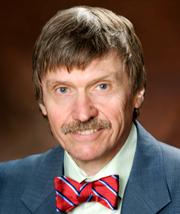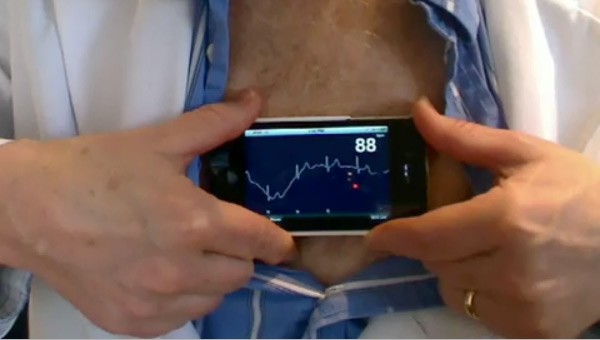I recently had the opportunity to discuss developments in healthcare with Mervyn Turner, Merck’s former Chief Strategy Officer. Some of the topics we covered include : what were the most remarkable developments in healthcare, looking back over the last 5 to 10 years ? How have these developments changed the patient experience ? How have they changed the physicians’s practice ? How have they changed healthcare companies ?
I/ Mervyn Turner’s Bio

Dr. Turner is currently an advisor for Bay City Capital in San Francisco.
Dr. Mervyn Turner has over 25 years of experience in pharmaceuticals drug discovery, research and development, licensing and business development, emerging markets, strategy development and implementation. In his last role prior to his retirement from Merck & Co. Inc., he was the company’s first Chief Strategy Officer, and drove strategy planning and resource planning discussions. He also worked with the research division, the commercial organization and the manufacturing division to develop a coherent, overarching strategy for Merck & Co. Inc.’s investments in the emerging markets. Prior to that, he led the transformation of Merck & Co., Inc. from an inward-facing to an outward looking organization as head of World Wide Licensing & External Research. He was personally involved in more than 200 strategic transactions, including mergers and acquisitions. Dr. Turner has published over 80 articles in peer reviewed journals.
II/ Past and present developments in healthcare
One of the most remarkable developments in healthcare is the democratization of drug discovery, according to Merv. In the past, if you wanted to discover a new molecule, you had to go to a large pharma company. But, now most of the technologies needed for drug discovery are broadly distributed and available to large pharma, mid pharma, startup companies, Contract Research Organizations (CRO’s) and academia. This is dramatically changing the landscape for early stage drug discovery, in particular. All big pharmas understand that they have to be open to external innovation. And this requires a very active process to understand what’s going on in the innovation ecosystem.
Many small companies are created and most of them fail. But pharma can help, by reaching out proactively to understand their business, and to provide them with advice on how to make their technologies and products interesting. Most of these startup companies can’t raise the capital to go public (although more than 100 managed the trick in 2013) and to see their products through the risks involved in developing and launching into the market. Thus, they need to partner with big pharma companies most of the time.
The growing costs of healthcare are driving the search for greater efficiencies in the delivery model to generate improved outcomes at lower cost through better use of standard of care, according to Merv. For example, rehospitalization for congestive heart failure is a large driver of Medicare costs. About 14% of Medicare patients have heart failure, yet it has been estimated that they account for 43% of Medicare spending. Most patients fail to comply with the prescribed treatment regime, producing the high rates of rehospitalisation.. Payers are pushing for ways to keep those patients at home and treatment compliant. This is likely to be an area where remote patient care and remote patient monitoring can deliver improvements in both quality of life, and patient outcomes.. More on this topic later.

A major focus in recent years has been on the development of Health Information Technologies, HIT, major investments in the space where IT and healthcare converge, according to Merv. Although the use of Electronic Health Records (EHRs) has become ubiquitous, issues around interoperability and data mining standards still provide major hurdles to the application of Big Data to the questions of health economics and improved patient outcomes.
Then, I asked Merv what were, in his view, the most interesting developments in healthcare today. Why does he find them interesting ? In what ways have they surprised him ?
III/ Remote patient care and remote patient monitoring.
Remote patient care and remote patient monitoring will accelerate in the next decade, according to Merv. It will take many forms. For example, as the baby boomer generation ages, their children will often find themselves in the caregiver role, while looking after their own kids, too (the so-called sandwich generation). The elderly want to maintain an independent lifestyle as long as possible, ageing in place. Remote patient care and remote patient monitoring can provide some of the tools for the caregiver to know that Mom is safe in the home, is mobile, and attending to the activities of daily living, as well as taking their meds. A number of products are entering the marketplace to fill that need, but at present we have not seen, according to Merv, the « killer app », the iPhone of healthcare.
IV/ The iPhone of healthcare
What would the iPhone of healthcare do? It would monitor a variety of vital signs – heart rate, heart rhythm, respiration, pulmonary odema, activity levels, location — depending on the patient needs, and connect that information with the caregiver and/or the healthcare provider. Of course, no-one wants to deal with a constant stream of data, least of all a busy healthcare provider. Thus the key is to triage the data in an actionable away, to provide an alerting service when a patient goes off-limits, physically or physiologically. The caregiver could know that Mom has gone wandering ; the healthcare provider could be alerted to the need to intervene to avert decompensated heart failure

Until its recent merger with eCardio Diagnostics LLC, Merv was on the board of Preventice, a startup headquartered in Minneapolis, MN. Preventice developed a first-in-class, commercially available wireless remote cardiac monitoring system.The strategic combination with eCardio, which has a ten-year history in remote cardiac monitoring provides for on-going market expansion of remote monitoring systems and mobile health applications. This looks like a good example of the data-enabled services and solutions model that starts with the physician and connects directly to patients.
V/ Perverse incentives and conflicts of interest are slowing down the innovation pace, in the US
However, In the US, the big issue is perverse incentives and conflict of interest, according to Merv. In 2011, the Institute of Medicine released a report suggesting that of $2.5 trillion spent on healthcare in the US in 2009, no less than $765 billion was waste, an amount larger than the annual budget of the US Department of Defense. The opportunities for improved efficiencies are enormous. But what is waste to one person waste is someone else’s compensation. So there is a lot of vested interest in preventing stakeholders from adopting new approaches which could increase efficiencies and reduce waste. For example, reducing re-hospitalisation rates for CHF leaves hospital beds empty, which are otherwise a source of revenue. What is the incentive to keep the patient in the community?
To sum up, key developments in healthcare include :
- The democratization of drug discovery
- The emergence of remote patient care and remote patient monitoring services.
- The barriers to cost reduction represented by perverse incentives.
In a follow-up conversation, Merv and I discussed more developments, including :
- increasing pressure to demonstrate pharmacoeconomic value for new medicines.
- the potential impact of behavioral science on health and healthcare
- an approaching binary outcome for Alzheimer’s Disease research.
- last but not least, the projections of Ray Kurzweil’s Singularity and its significance for healthcare
Further readings
- For a read on how e-health is an innovation opportunity, please refer to this article.
- For an overview of the french pharmaceutical industry, follow this link.
- For a quick overview of m-health in a form of a graphic, click here.
- For a read on how corporations invested massively into digital health in 2014, read this.
[…] Dr. Mervyn Turner has over 25 years of experience in pharmaceuticals drug discovery, research and development, licensing and business development, emerging markets, strategy development and implementation. In his last role prior to his retirement from Merck & Co. Inc., he was the company’s first Chief Strategy Officer, and drove strategy planning and resource planning discussions. He also worked with the research division, the commercial organization and the manufacturing division to develop a coherent, overarching strategy for Merck & Co. Inc.’s investments in the emerging markets. Prior to that, he led the transformation of Merck & Co., Inc. from an inward-facing to an outward looking organization as head of World Wide Licensing & External Research. He was personally involved in more than …read more […]
[…] the first two parts of this interview, read here and […]
[…] Pour une discussion sur le renouveau de la santé à l’ère du digital, se rendre ici. […]
[…] une autre vision des enjeux de l’innovation de la santé, veuillez vous référer à cet échange avec Merv Turner, investisseurs dans la e-santé et anciennement directeur de la stratégie de […]
[…] Pour une longue discussion avec Merv Turner, ex-Merck, sur les enjeux globaux du numérique au sein du secteur de la santé, cliquer ici. […]